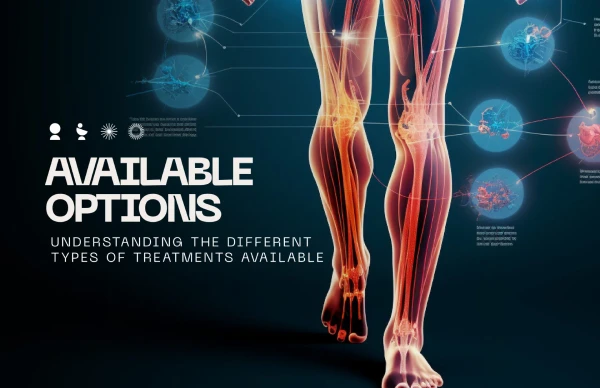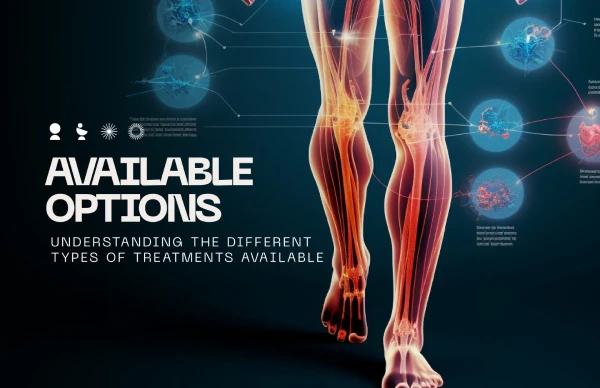Blog
Joint pain – what peptide should I use? BPC —> PRP —> stem cells

Contents
What is joint pain?
Causes of joint pain
Joint pain treatments
Peptides for joint pain
Types of peptide therapy
Potential side effects of peptide therapy
Consider the benefits of peptides for joint pain
Have you contemplated peptides for joint pain? These therapeutic proteins are shown to provide relief to people with the condition. Learn more about joint pain peptide therapy and why it’s safe and effective.
What is joint pain?
Joints connect bones, providing support and mobility. Disease and injury can cause painful damage that impedes your movement. The discomfort can disrupt your quality of life if it’s severe.
Joint pain commonly affects:
- Middle-aged or older people.
- Those with prior injuries to the spot.
- Overweight people.
- Individuals with anxiety, stress, or depression.
- People who aren’t in good health.
You may experience constant or intermittent pain. The joint could be stiff in the morning, but movement may loosen it. Don’t do too much, as you might aggravate the pain.
The two joint pain types are:
- Acute: This temporary condition occurs quickly, like an injury.
- Chronic: This type of joint pain happens over time and leads to long-term problems. Underlying conditions, like arthritis, are usually the cause.
Joint pain can affect your hands, elbows, wrists, knuckles, hips, ankles, and the base of your spine.
Causes of joint pain
Chronic joint pain may be due to:
- Osteoarthritis. This condition develops in middle-aged people as cartilage wears away. The joints become stiff and painful.
- Rheumatoid arthritis. This chronic disease causes joint swelling and pain. The wrists and fingers are prone to it.
- Gout. This condition occurs when body crystals accumulate in the joint. Gout usually appears on the big toe, causing severe pain and swelling.
- Bursitis. This ailment is due to bursae inflammation and affects the knee, elbow, hip, or shoulder.
- Viruses. Viral infections may cause painful joint movement.
- Injuries. Broken bones or sprains might result in joint pain.
- Tendinitis. Inflammation of the tendons results from overuse. The pain generally occurs in the shoulder, elbow, or heel.
Joint inflammation symptoms include swelling, redness, tenderness, warmth, and painful movement.
You should see a doctor if the pain interferes with your normal activities. Early diagnosis is vital to treat the problem and maintain healthy joints. Other accompanying signs include fever and unexplained weight loss.
Joint pain treatments
There’s currently no known cure for joint pain, but there are ways to find relief.
Over-the-counter meds and exercise may help. Some doctors recommend peptides for joint pain. Prescription medicine or surgery might be necessary if the condition is severe.
The following treatment methods may help with joint pain.
Medications
Nonsteroidal anti-inflammatory drugs (NSAIDs) may provide relief for moderate-to-severe joint pain. Aspirin, ibuprofen, celecoxib, or naproxen might also help. Beware of their potential side effects.
Your physician may prescribe opioids if NSAIDs don’t work for severe pain. Use these drugs only with your doctor’s knowledge, as they can cause drowsiness.
Topical agents
Topical treatments may also relieve pain. Rub gels or ointments over the affected area. Get them over the counter or with a doctor’s prescription. Arthritis creams with methyl salicylate are suitable options.
Injections
Consider injections if oral or topical treatments don’t provide relief. Intra-articular therapies deliver medication throughout the joint. The following options are available:
- Steroids. Doctors inject a steroid medication into the joint every 3–4 months. This treatment is effective, but the results may be temporary.
- Platelet-rich plasma therapy. PRP injections may accelerate healing. Peptide injections for joint pain may have anti-inflammatory effects that offer relief. They’ve shown positive results for osteoarthritis in the hips, knees, and shoulders.
- Stem cells. This therapy uses stem cells to treat regenerative conditions. It’s effective for shoulder arthritis. Since stem cells build human tissue, the goal is to use them to regrow cartilage that cushions the bones.
Physical therapy
Physical therapy strengthens, stabilizes, and improves the range of motion in joint muscles.
Losing weight can relieve some pressure on your joints if you’re overweight. Low-impact exercises, like walking or swimming, don’t aggravate the affected area. Consult your doctor before beginning any workout regimen.
Home care
Here are some therapy techniques to use at home:
- Use a brace or wrap to protect the joint.
- Rest the painful joint.
- Apply ice to the joint for 15 minutes several times daily.
- Use an elastic wrap to compress the joint.
- Raise the joint above your heart level.
Alternative treatments
There are claims that chondroitin and glucosamine supplements may relieve joint pain. They’re worth trying, as they reportedly don’t have significant side effects.
Surgery
Your doctor may recommend surgery if drugs and other treatments don’t provide relief. The surgical options include:
- Arthroscopy. A surgeon inserts a medical instrument into the joint to repair cartilage.
- Joint replacement. This procedure involves implanting an artificial joint to replace damaged bones.
Peptides for joint pain
Peptides are chains of 2–50 amino acids that form proteins. They also make up enzymes, hormones, and neurotransmitters. Peptides support your body’s natural healing abilities and perform the following tasks:
- Reduce inflammation
- Aid weight loss
- Repair soft tissue
- Promote healing
You can find peptides in skincare products, supplements, food, medications, and injections.
Peptide therapy could treat acute and chronic health conditions and prevent reoccurrence. It maintains peptide levels by mimicking the functions of those found in your body.
Research shows that supplementing specific collagen peptides reduces activity-related joint pain. Using peptides for joint pain may reduce inflammation, improve bone health, and stimulate human growth hormone production.
Types of peptide therapy
Subcutaneous injections push peptides into the bloodstream for quicker use by the body. Peptide therapy is safe because of its low toxicity. It produces positive results and has minimal side effects. You may receive standalone treatments or a combination of peptides.
Peptide therapy for joint pain often includes BPC-157. Also known as the body protection compound, it consists of 15 amino acids. You may find its natural form in stomach juice. The peptide has many reported health benefits, including:
- Promoting angiogenesis. BPC-157 facilitates the creation of new blood cells, increases capillary development, and improves blood and nutrient flow. The process also aids wound healing.
- Reducing inflammation. According to research, the BPC-157 peptide has anti-inflammatory properties and heals wounds. Treating inflammation limits joint pain and damage.
- Encouraging soft tissue repair. BPC-157 repairs tissues by activating human growth receptors. The peptide rejuvenates muscles, ligaments, tendons, and nerves. It heals injuries and improves joint mobility.
- Increasing fibroblasts. The biological cells maintain body tissues, such as ligaments and tendons. BPC-157 increases fibroblasts to help injury healing.
- Boosting collagen production. The body uses BPC-157 to make connective tissue, a key component of bone, muscles, skin, tendons, and cartilage. Collagen strengthens tissues and helps them withstand stretching.
According to research, BPC-157 intra-articular injections relieve knee pain. The peptide may repair tears, develop cartilage, and reduce the number of surgeries. This treatment is better than steroids, because BPC-157 has reparative abilities.
Potential side effects of peptide therapy
Peptide therapy doesn’t cause any serious side effects, as these compounds occur naturally in your body. Start with a low dose and increase it as your body adapts. Some possible side effects include redness and swelling.
Other reactions are usually due to injecting a high dose. These discomforts may include:
- Allergic reactions. You may experience swelling, hives, or difficulty breathing.
- Cardiovascular issues. Some peptides affect heart function and blood pressure. These therapies might cause hypertension, palpitations, and tachycardia.
- Gastrointestinal discomfort. You may have diarrhea, nausea, and vomiting from digestive system peptides.
- Cognitive problems. Central nervous system peptides may cause dizziness, headaches, or fatigue.
Consider the benefits of peptides for joint pain
Peptide therapy is an excellent alternative to medication and surgery. These natural molecules are generally safe to use. Their anti-inflammatory and reparatory properties could significantly reduce joint pain.
Ready to discover the benefits of peptides for joint pain? Consider peptide therapy at LIVV Natural. Our doctors are committed to ensuring you achieve ultimate wellness.
Author: Dr. Jason Phan NMD – Founder of LIVV Natural – Anti-aging – regenerative medicine – peptide therapy


